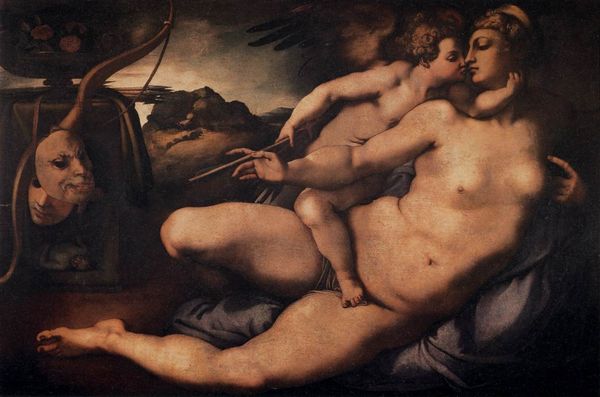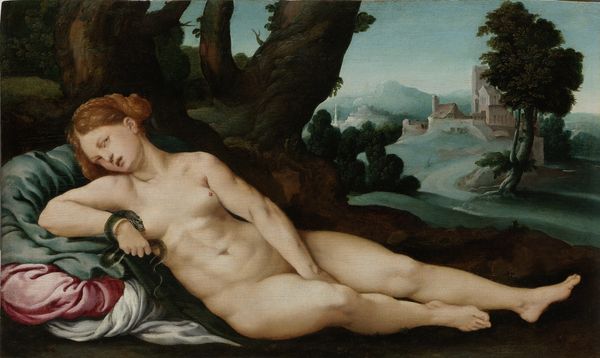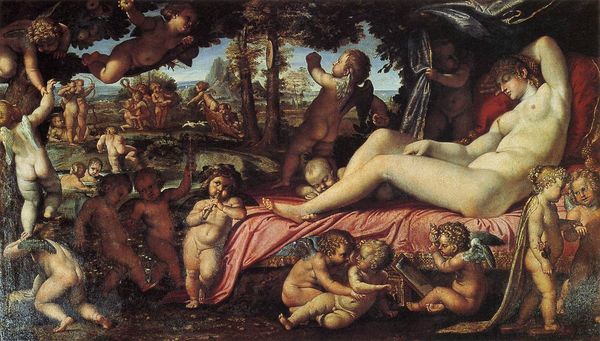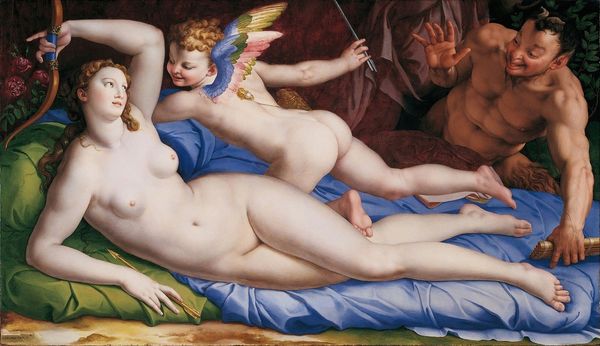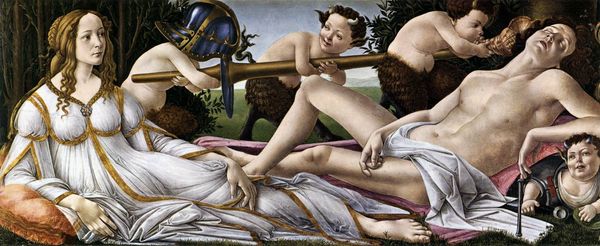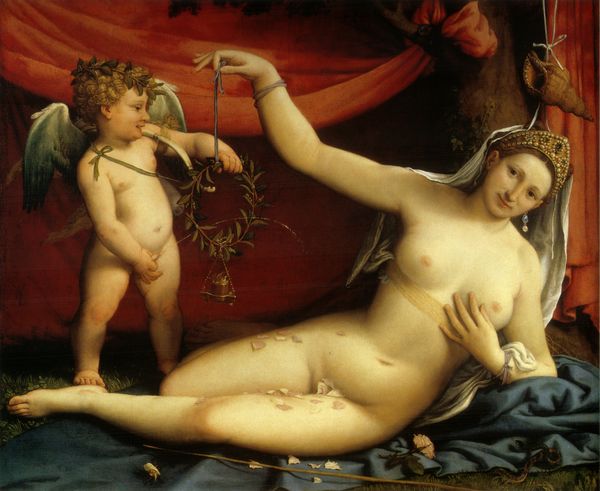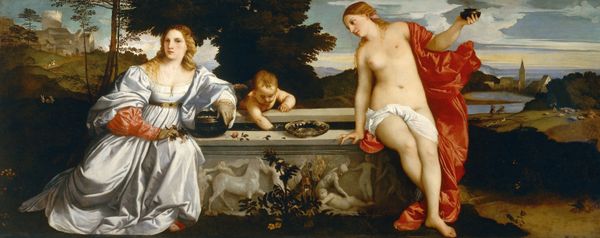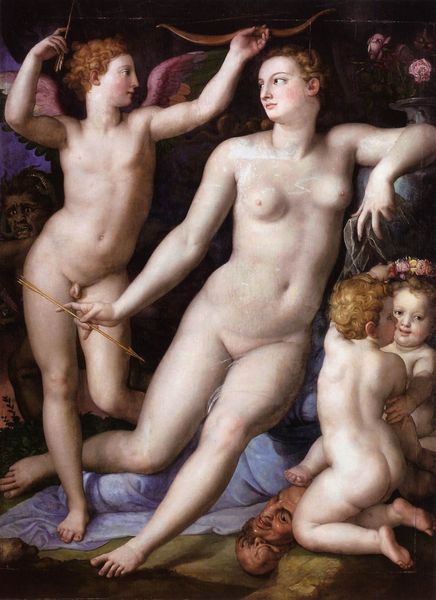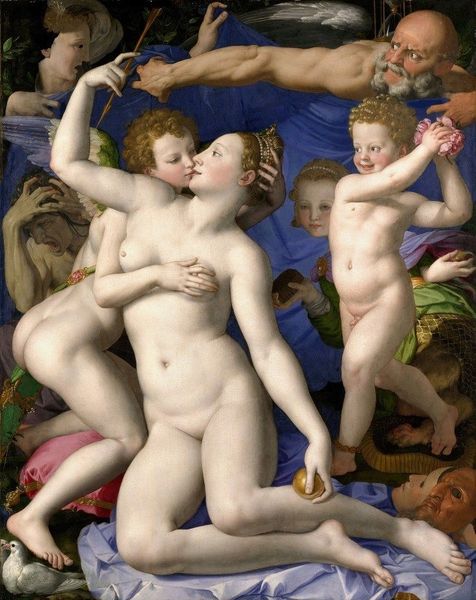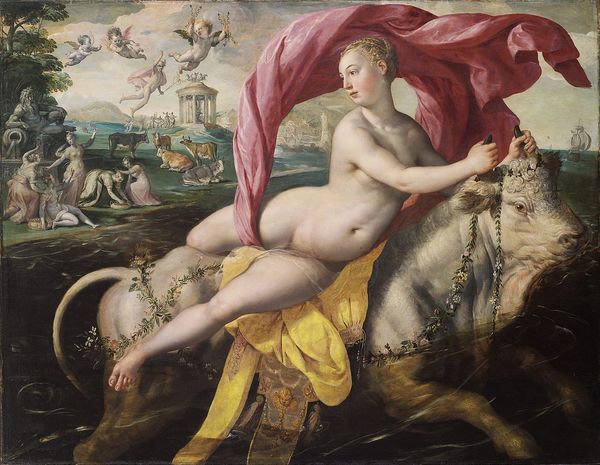
oil-paint
#
portrait
#
high-renaissance
#
venetian-painting
#
allegory
#
oil-paint
#
oil painting
#
mythology
#
nude
Copyright: Public domain
Editor: Here we have Palma Vecchio’s “Venus and Cupid,” created around 1524. It’s an oil painting, and it feels very... idyllic. I'm struck by the almost dreamy quality of the landscape and the way the figures interact. What stands out to you in this piece? Curator: The enduring power of this image lies in its embodiment of ideal beauty, infused with cultural memory. Consider Venus's reclining pose: echoes of classical sculptures resurface here, speaking to a longing for a golden age, a primordial harmony. Editor: I see that now! Like, the "birth of Venus" sort of pose? What does it all mean? Curator: Yes, precisely. Venus represents love and beauty, and her placement in the landscape implies nature is the cradle of these qualities. Even the way Cupid playfully offers her the arrow — usually his instrument—symbolizes love’s gentle invitation rather than a forceful strike. Don't you perceive an element of hesitation, almost contemplation, in Venus’s gaze? Editor: She does look rather pensive. Almost… knowing? Curator: Precisely! Perhaps aware of love’s bittersweet nature, its capacity for both joy and pain. Vecchio suggests love is not a simple arrow, but something more intricate, interwoven with life’s landscapes. How does that make you feel, considering it today? Editor: It gives the whole image more depth, definitely. I initially saw it as just pretty, but now I see a richer exploration of love itself. Curator: Indeed, and by employing enduring symbols and relatable emotions, Vecchio crafted a visual echo that resonates across centuries.
Comments
No comments
Be the first to comment and join the conversation on the ultimate creative platform.
